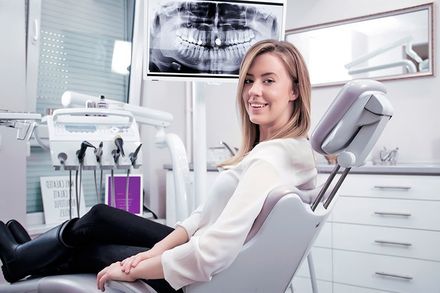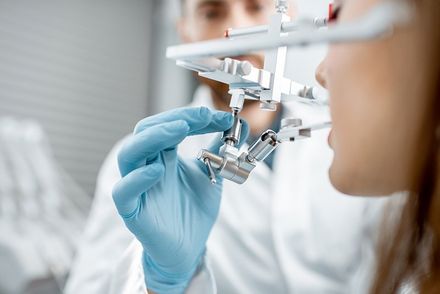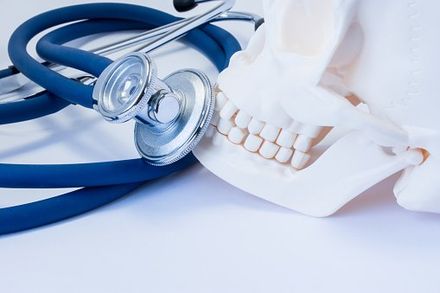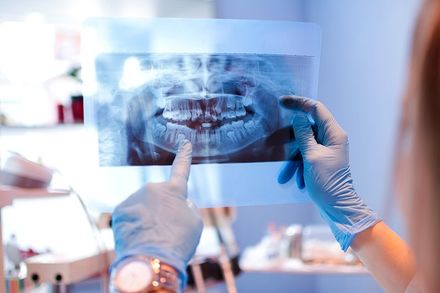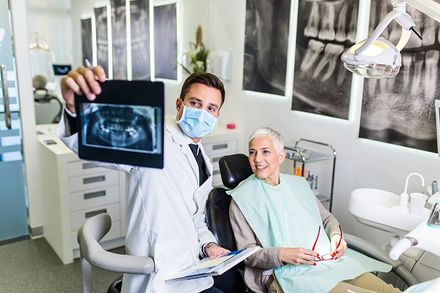Periodontal Diagnosis & Treatment
Dental Tissue Biopsy
Dental Tissue Biopsy
Throughout the medical field, a biopsy is simply the removal of a tissue sample to determine if it is diseases. In dentistry, teeth and gums are sent for biopsy. The role of a biopsy in the dental industry is to diagnose oral cancer. In these instances, a brush biopsy is used to identify oral lesions that warrant further attention. If you have unexplained lesions in your mouth, they need to be examined by a dentist. They may or may not be cancerous, but they need medical attention nonetheless.
Bone Grafting
Bone grafting is where the jawbone is built up to accommodate a dental implant or other restorative device. Bone grafting is a common procedure that is used frequently for dental implants and other periodontal procedures. The bone used to graft is taken from a sample from the patient. Many times, the bone is taken from another area of the mouth when drilling takes place. The bone fragments are suctioned from the mouth and used for the graft. Cadaver bone fragments are also used. They are harvested by bone banks and are a very safe source for bone donation.
Crown Lengthening
Cavities or a broken tooth can cause enough decay to the point where restoration is virtually impossible without a procedure called crown lengthening. Crown lengthening is a routine surgical procedure, which remodels the contour of the gum line. The procedure does not actually lengthen the crown, but rather lowers the gum line. When there is not enough tooth structure to affix a crown, this is the only option. Sometimes a tooth has been broken below the gum line. In this instance, crown lengthening is very successful in exposing more of the tooth, so that the dentist has something to work with.
Occlusal Adjustment
Occlusal Adjustment
An occlusal adjustment corrects the alignment of the bite, that is a result of loose, shifting, crowded, or missing teeth. The result is an evenly distributed bite that eliminates irregular pressure on one side of the mouth. Once your bite is adjusted, your teeth will meet properly. Occlusal adjustment causes minimal pain, and only a little discomfort. The adjustment is made by using a dental drill using a fine filing stone. In addition to the actual adjustment, removal mouthpieces are also utilized, to protect the tooth surface, and relax the jaw muscles once the adjustment is completed. If you suspect that you may need an occlusal adjustment, schedule an appointment today, 908-359-0666.
Periodontal Splinting
Periodontal Splinting
Teeth become loose because of lost gum tissue, injury, orthodontic treatment, or pressure caused by tooth misalignment. A new technique called periodontal splinting attaches weak teeth together, turning them into a single unit that is stable and stronger than the single teeth by themselves. The procedure is most commonly performed on the front teeth. The procedure is as simple as using composite material to attach, or splint, the loose teeth to the adjoining stable teeth. Tooth splinting is a common procedure that has gained popularity due to its effectiveness.
Frenectomy
A frenulum is a piece of tissue that prevents an organ from moving. There is a frenulum that attaches your upper lip to the gums, while another connects the lower lip to the gums. A frenulum that is too short or thick, will cause problems in speech patterns and tooth misalignment. In infants, a shortened frenulum underneath the tongue will inhibit breastfeeding. When the frenulum disrupts movement, growth, or development, corrective action is necessary to resolve the situation.
A frenectomy is a minor surgical procedure that is performed in your dentist's office. It can be performed with either a scalpel or laser and takes less than 15 minutes. Using a laser causes very little bleeding and does not require stitches. A laser also results in less postoperative discomfort and a shorter healing time. Young children and infants are put under general anesthesia for the procedure and adults have the procedure performed using local anesthesia. If your child needs a frenectomy, there is nothing to worry about. The procedure is very successful and causes minimal discomfort.
Soft Tissue Graft
To restore proper gum level and functionality a soft tissue graft can be performed. This is done by either removing soft tissue from the roof of the mouth or repositioning healthy gum tissue from adjacent teeth. This procedure is very predictable and has a high success rate. This procedure should be performed before more serious problems develop and periodontal surgery is necessary.
Gum Disease & Gingivitis Treatment
Periodontal (gum) disease is insidious. It is an infection of the gums that starts out as plaque, an opaque film on the teeth that hardens to form tartar. As tartar accumulates, it harbors bacteria that attack the soft tissue around the gums. This is the early stage of gum disease known as Gingivitis. Left untreated, Gingivitis becomes Periodontitis which ultimately destroys the tissue surrounding your teeth AND the bone that holds your teeth in place. Except for bad breath and gums that bleed, there are very few early warning signals. The disease advances silently, often without pain, and before you know it, you are losing your teeth and you don't know why.
Scaling & Root Planing
Scaling & Root Planing
As a non-surgical procedure, scaling and planing is performed without any anesthesia, in the dentist's office. While the procedure is usually painless, advanced stages of gingivitis may make it necessary to numb the area for complete comfort. Deep scaling and root planing are usually broken down into one section of the mouth per appointment. This allows for adequate healing time and reduces the time for each appointment. The difference between scaling and root planing is simple. Scaling is the removal of the dental tartar from the tooth surface Root planing is the process of smoothening the root surfaces and removing the infected tooth structure.
Gingival / Gum Grafting
Gingival / Gum Grafting
Gum grafting is the corrective procedure that restores the gum to its natural, healthy state. Using soft gum tissue from the roof of the mouth, the receded gums are grafted. The goal if the graft is to cover exposed tooth and root surfaces with grafted on oral tissue. This grafting encourages new tissue growth that will enable the gums to return to its original position around the teeth. The procedure is routine and entails a minimal amount of downtime and discomfort.
Osseous Surgery / Pocket Reduction
The goal of periodontal surgery to gain access to the tooth root and to clean the damaged areas. Once the dentist can visually see the damage, it can be removed completely. Removing the plaque and decayed gum tissue leaves a pocket between the gum and the tooth. Sometimes the gum returns to its original position, but still the pocket is present. The pocket requires more frequent cleanings as the patient is unable to get to the pockets with regular brushing and flossing. Once the swelling from the periodontal treatment has subsided, the dentist may need to suture the gum to where the bone has resorbed. The goal is to create a space large enough, so it can be reached through daily oral hygiene, but small enough that it is not a breeding ground for plaque and bacteria.
Osseous Grafting / Guided Tissue Regeneration
Osseous surgery is a procedure that reshapes the bone which holds your teeth in place. Osseous surgery commonly treats periodontitis. Patients with periodontitis experience defects in the bone around their teeth. The osseous surgery removes those defects. Prior to the surgery, the patient undergoes a periodontal treatment that consists or scaling and root planing. A local anesthetic is administered to minimize the pain. Once the roots are cleaned, the dentist uses a drill and sharp dental tool to reshape the bone surrounding the teeth. Depending on the extent of the defects, the deformed bone is removed, and the rest is shaped. Bone grafting material is used where the defects are too large to be treated with only reshaping. Once the bones are back to their original state, the gums are stitched back into place. Osseous Grafting is a routine procedure, with a high success rate.
ARESTIN
ARESTIN® (minocycline hydrochloride) Microspheres, 1 mg is an effective antibiotic treatment that comes in powder form. This powder is placed inside infected periodontal pockets just after the dental professional finishes the scaling and root planing (SRP) procedure.
 Open Weeknights | Open Sundays | Emergencies Seen Promptly
Open Weeknights | Open Sundays | Emergencies Seen Promptly
 Get in Touch:
Get in Touch:
